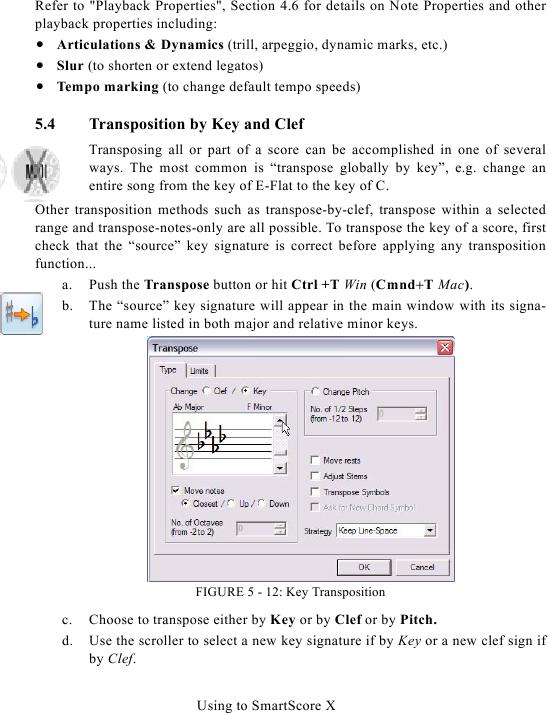playback properties including:
· Articulations & Dynamics (trill, arpeggio, dynamic marks, etc.)
· Slur (to shorten or extend legatos)
· Tempo marking (to change default tempo speeds)
5.4
Transposition by Key and Clef
Transposing all or part of a score can be accomplished in one of several
ways. The most common is "transpose globally by key", e.g. change an
entire song from the key of E-Flat to the key of C.
Other transposition methods such as transpose-by-clef, transpose within a selected
range and transpose-notes-only are all possible. To transpose the key of a score, first
check that the "source" key signature is correct before applying any transposition
function...
a. Push the Transpose button or hit Ctrl +T Win (Cmnd+T Mac).
b. The "source" key signature will appear in the main window with its signa-
ture name listed in both major and relative minor keys.
FIGURE 5 - 12: Key Transposition
c.
Choose to transpose either by Key or by Clef or by Pitch.
d.
Use the scroller to select a new key signature if by Key or a new clef sign if
by Clef.
Using to SmartScore X

